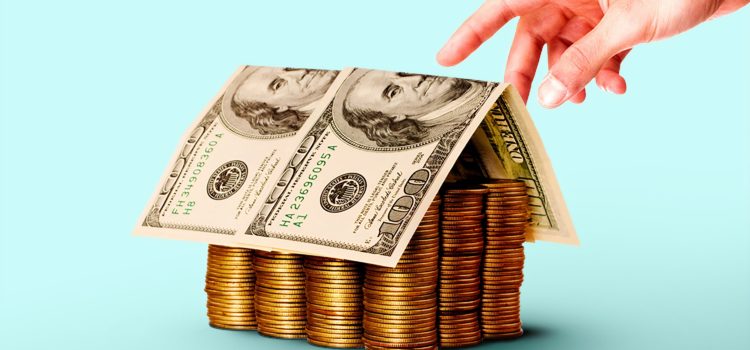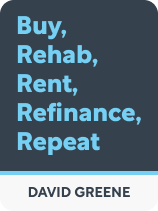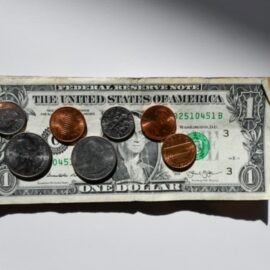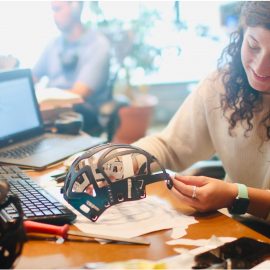

This article is an excerpt from the Shortform book guide to "Buy, Rehab, Rent, Refinance, Repeat" by David Greene. Shortform has the world's best summaries and analyses of books you should be reading.
Like this article? Sign up for a free trial here .
What is the BRRRR method? How can you use it to make more money renting out properties?
In the book, Buy, Rehab, Rent, Refinance, Repeat, real estate agent David M. Greene explains how investors can gain more income if they use his BRRRR method. This strategy differs from a traditional method of investing by flipping distressed houses and refinancing them to buy another property.
Keep reading to see if the BRRRR method is the right investment strategy for you.
What Is the BRRRR Method?
From moguls like Donald Trump to HGTV house-flippers, countless people have invested in real estate to build their wealth. Some focus on commercial real estate, others restore and sell run-down residences, and still, others buy single- and multifamily homes to rent out to tenants.
In Buy, Rehab, Rent, Refinance, Repeat, David M. Greene focuses on this last category. He explains how the buy, rehab, rent, refinance, repeat (BRRRR) method differs from traditional real estate investing, and he argues that the BRRRR approach is the most efficient way to build wealth and gain financial freedom by developing a large portfolio of investment rental properties.
The BRRRR Method vs. the Traditional Method
The BRRRR model hinges on two elements:
- Buying a property as far below market value as possible and paying the full price (not just a down payment)
- Refinancing the property after you’ve renovated and rented it out (Shortform note: The term “refinance” is misleading because you’re not replacing an existing mortgage, since you paid full price for the home’s purchase. However, it likely refers to a cash-out refinance, which allows you to use your equity to borrow cash that you can use for anything—in this case, to “repeat” the process and buy your next investment property.)
Together, these steps represent the biggest difference between BRRRR and the traditional approach to real estate investing: BRRRR investors finance the property at a later stage than traditional investors. This chart illustrates the difference in the sequence of steps for each approach.
| BRRRR | Traditional | |
| Step 1 | Buy a property below market value and pay full price (without mortgage payments). | Finance: Borrow money from a lender to cover the property’s purchase. |
| Step 2 | Rehab, or renovate the property, paying for it out of pocket. | Buy the property with an out-of-pocket down payment. |
| Step 3 | Rent the property. | Rehab the property. |
| Step 4 | Refinance the property. | Rent the property. |
| Step 5 | Repeat: Use the money from refinancing to buy and rehab a new investment property. | Save or secure money through other means (which we’ll discuss later) for the down payment on a new investment property. |
(Shortform note: Although the BRRRR method is described as a five-step process, there is an implied preliminary step: saving or securing money to buy the property. Including this unstated step more clearly shows that the primary difference between BRRRR and traditional investing is that the “finance”—or “refinance”—stage and the “save” stage are flipped.)
Greene explains that the advantage of paying full price for a property and refinancing later is that the loan is based on the after-repair value (ARV), or the post-renovation appraisal. Since the renovations add value to the property, and the financing is proportionate to the home’s value, you get a bigger loan than you would if you’d financed the purchase of the property.
The goal is to pay as little as possible for the property and rehab it to increase the value as much as possible. Ideally, through refinancing, you recover all of your investment (or sometimes more), and you use that money to buy and renovate the next property. (Greene acknowledges that recouping your entire investment is a “home run”—something to strive for, but not something to expect on every project.) By pulling your money back out of the project, you make the same dollars work for you over and over, thereby increasing the velocity of your money.
| BRRRR Is Best for Long-Term Profits and New Investors The BRRRR method is best for investors who are focused on building a large portfolio of rental properties and growing wealth over time. By contrast, if you want to use rental properties to turn a profit quickly, a better strategy is to buy a turnkey property and begin renting it immediately. Alternatively, real estate investor Chad Carson recommends using BRRRR only to begin building your portfolio of investment properties—otherwise, if you use BRRRR indefinitely, you’ll accumulate a large number of mortgages, and that creates greater risk if the market drops. Carson suggests that once you’ve acquired several properties, you use the rental debt snowball strategy by funneling all of your rental income into paying off one mortgage at a time until all of your properties are paid off. By eliminating your mortgage payments, you increase your cash flow, and at that point, you can choose whether and how to continue building your portfolio. |
For example, imagine you find a fixer-upper for $95,000 and spend an additional $25,000 on renovations, making your total initial investment $120,000. After the improvements, the home is appraised for $160,000. You refinance, and the lender grants you a loan for 75% of this ARV, or $120,000. You’ve recovered your entire investment to use for your next property, and, as long as the tenants’ rent covers your mortgage and expenses, you’ve gained a consistent source of income. Greene asserts that even if the income from each property is just a few hundred dollars a month, the BRRRR method allows you to quickly build your volume of properties and multiply that cash flow.
Let’s go into more detail about the buy, rehab, rent, refinance, and repeat steps of the BRRRR method.
Step 1: Buy
When you’re ready to begin the BRRRR process, Greene claims that your success in Step 1 sets the tone for the success of the entire project: You need to buy significantly under market value to be able to recover most or all of your investment during the refinance. The amount of money you can save or make during the other steps is either more limited or is directly impacted by Step 1.
Step 2: Rehab
Once you’ve found and bought a great deal, Greene says that executing a cost-effective, value-raising renovation is the second most important aspect of making a profit in the BRRRR method. This involves working with the right contractor and making smart upgrades to the property.
(Shortform note: Many real estate investors consider this to be the riskiest step in BRRRR, especially for rookie investors, since unexpected issues with the property, poor project management, and bad renovation decisions can add tens of thousands of dollars to the budget. As an alternative, buying properties that are already renovated and rented out allows wary investors to bypass two of BRRRR’s biggest potential hazards.)
Step 3: Rent
As soon as your property is rehabbed, Greene writes that it’s time to start renting it and creating cash flow.
(Shortform note: Finding tenants quickly is also critical because many lenders require you to have renters before refinancing. Delaying this step not only postpones your cash flow but also your ability to recoup your investment.)
Since you don’t have much wiggle room in your rent prices at this stage—they’re largely determined by the property you bought and the success of your rehab—your priorities in this stage are to minimize vacancy and manage your property effectively.
Step 4: Refinance
Greene writes that refinancing in the BRRRR method is comparable to selling in a house flip (when investors buy fixer-uppers, rehab them, and then sell the properties for profit): In either scenario, this is the stage when the investor recoups their investment in the property.
Although house flippers get bigger one-time payouts from home sales, Greene explains why he prefers the steady income from his portfolio of rental properties. First, home sales are subject to high capital gains taxes, whereas refinances aren’t taxed and the cash flow from rentals is taxed at a lower rate. Additionally, refinances are simpler and involve only the investor and the lender, whereas home sales also involve real estate agents, brokers, title and escrow companies, and others—all of whom charge fees.
Step 5: Repeat
Because you recover your investment during the refinance stage, the BRRRR method is uniquely designed to make it easier to repeat the process than other investment methods. Greene writes that repetition brings two primary benefits.
First, repetition builds the volume of your portfolio of rental properties, which increases your cash flow. You can also reduce your proportionate costs by negotiating discounts from members of your team in exchange for the volume of business you bring them.
The second benefit is that repetition allows you to learn from mistakes and develop systems that make your business more effective and efficient. Systems allow more of your business processes to run on autopilot, which gives you the capacity to take on more investment opportunities that would otherwise overextend you.

———End of Preview———
Like what you just read? Read the rest of the world's best book summary and analysis of David Greene's "Buy, Rehab, Rent, Refinance, Repeat" at Shortform .
Here's what you'll find in our full Buy, Rehab, Rent, Refinance, Repeat summary :
- An explanation of the BRRRR real estate investment method
- How to use the BRRRR method to produce consistent, passive income
- Why you should assemble a "Core Four" team rather than working alone






